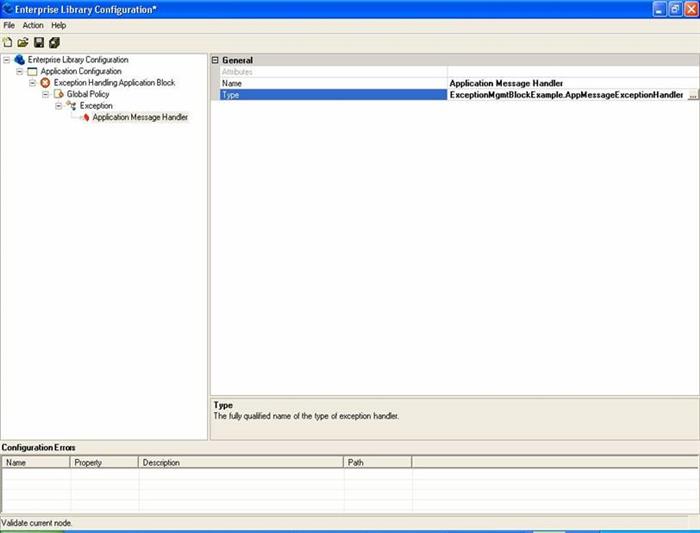Introduction
Exception Handling Application Block. An application block provided by Microsoft to incorporate exception handling in your applications as a standard framework, rather than ad-hoc approach. This article summarizes the basic concept and usage of the same.
Concepts
Exception Handling
Process of doing something with an exception when the exception is detected by your code
Exception Logging
Process of logging an exception, which might include sending formatted exceptions to the event log or sending an email
Exception Policies
Allow you to control exception handling and logging behaviors using external configuration files instead of baking such rules into your code
Using Exception Handling Block
3 things you can do when you detect an exception:
You can wrap the exception in a new exception to add new context information or detail. The original exception is still available through the InnerException property when the new exception is propagated up the call stack.
You can replace the exception with a new exception. Do this when you do not want details of original exception to be propagated across an application boundary.
You can log the exception. You can do this in combination with wrapping or replacing the exception, or you can log the original exception and propagate the original or new exception up the call stack.
Coding To-dos:
Add references to:
Microsoft.Practices.EnterpriseLibrary.Common.dll
Microsoft.Practices.EnterpriseLibrary.ExceptionHandling.dll
Microsoft.Practices.EnterpriseLibrary.ExceptionHandling.Logging.dll
Add configuration entries to app.config below <configSections> element under root <configuration> element:
<section
name="exceptionHandling"
type="Microsoft.Practices.EnterpriseLibrary.ExceptionHandling.Configuration.ExceptionHandlingSettings,
Microsoft.Practices.EnterpriseLibrary.ExceptionHandling" />
For logging, add following sections to <configSections> element:
<section
name="loggingConfiguration" type="Microsoft.Practices.EnterpriseLibrary.Logging.Configuration.LoggingSettings,
Microsoft.Practices.EnterpriseLibrary.Logging" />
Add <exceptionHandling> element directly under root element <configuration>, inside which you add all exception policies:
<exceptionHandling>
<exceptionPolicies>
<exceptionTypes>
<exceptionHandlers>
</exceptionHandlers>
</exceptionTypes>
</exceptionPolicies>
</exceptionHandling>
Alternatively, you can add elements easily using Enterprise Library Configuration Tool (part of Visual Studio 2005), as shown:

Import namespace of exception handling block Microsoft.Practices.EnterpriseLibrary.ExceptionHandling in your project and write code against classes in the above namespace.
Using ExceptionPolicy classes
Overview
Class exposes a static method: HandleException() that lets client application interact with Exception Handling Block.
You supply policy as an argument; HandleException method uses a factory to create object of type ExceptionPolicyImpl for supplied policy; this object has a collection of ExceptionPolicyEntry objects – one object for each exception type specified in configuration file for the named policy; for each exception type, ExceptionPolicyEntry contains a collection of objects that implement the IExceptionHandler interface; the collection is ordered and provides the sequence for exception handling block to use when executing the policy; each of these objects have associated configuration information specific to each type of handler.
Example:
Button-click event handler example with simple exception handling (C#)
private void btn_Click(object sender, EventArgs e)
{
try
{
throw new Exception("This is a test exception");
}
catch (Exception ex)
{
bool rethrow = ExceptionPolicy.HandleException(ex, "Global Policy");
if(rethrow)
{
throw;
}
}
}
Button-click event handler example with logging (C#)
private void btn_Click(object sender, EventArgs e)
{
try
{
throw new Exception("This is a test exception");
}
catch (Exception ex)
{
bool rethrow = ExceptionPolicy.HandleException(ex, "Log Only Policy");
if(rethrow)
{
throw;
}
}
}
Sample of logging configuration information in app.config is shown in the attached PPT.
References...
MSDN on Exception Handling Application Block
Blog on EAB
 General
General  News
News  Suggestion
Suggestion  Question
Question  Bug
Bug  Answer
Answer  Joke
Joke  Praise
Praise  Rant
Rant  Admin
Admin 







